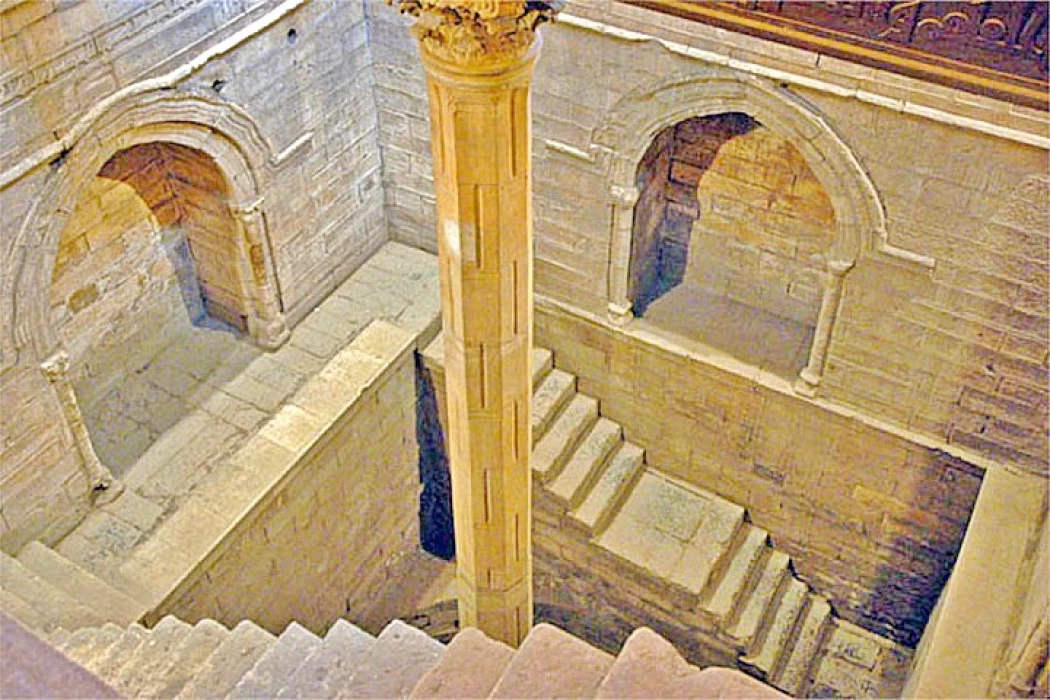
The Roda Nilometer in Cairo | Annual Flooding of the Nile
It was used to measure the flooding of the Nile, based on which taxes are determined in the next agricultural year. The Egyptians have known since ancient times the construction of scales throughout the country to recognize the height of the Nile due to its close relationship with the land and the collection of tribute, i.e., taxes or state funds.
Geometric characterization of the scale
The stages of the work have a precise organization and timing, as well as from the start of drilling the well and the tunnels connected to it, until the work is completely completed in the construction of the well: its walls, tunnels and the column that was placed exactly in the axis of the well. The hole that was used to build the well was square, with a side of at least ten meters, and a height of at least 12 meters, so it was necessary to dig at least 1200 cubic meters of dust and clay, and to that depth. This archaeological scale is:
surmounted by a 19-arm Roman crown, on which measurement marks are engraved. The column is centered on a square well-constructed with courteous stones, the thickness of which was taken into account in its construction to increase the greater the depth. Therefore, the well was constructed of three layers: the lower one in the form of a circle, topped by a square layer with a side larger than the diameter of the circle, and the upper Square, and the last one with a side larger than the middle square. It should be noted that the thickness of the walls and their gradation in this way indicate that the Muslims were aware of the geometric theory.
Running around the walls of the well from the inside is a staircase that reaches the bottom. These openings are surmounted by pointed arches resting on columns embedded in the walls, with Capitals and Lancet bases. The middle column is based on a sycamore wood base because it is the only one that is not affected by water, to install it from below, and it is fixed from above by a Shadad award (as a bond), and it has an inscription in kufi for a Quranic verse The archaeological aspect of the scale.
The current scale on Al-Rawda island is the second oldest Islamic monument after the remains that do not remain in the mosque of Amr ibn al-Aas; it is also attributed to the Abbasid era. The whole gauge was kept in good condition thanks to maintenance and repair works carried out by the Ministry of Works in 1927.
Historians have agreed that this scale was built in the year 247 AH (861 AD) by order of al-Mutawakkil, the Abbasid caliph. Some attributed it to the caliph Al-Ma'mun.















